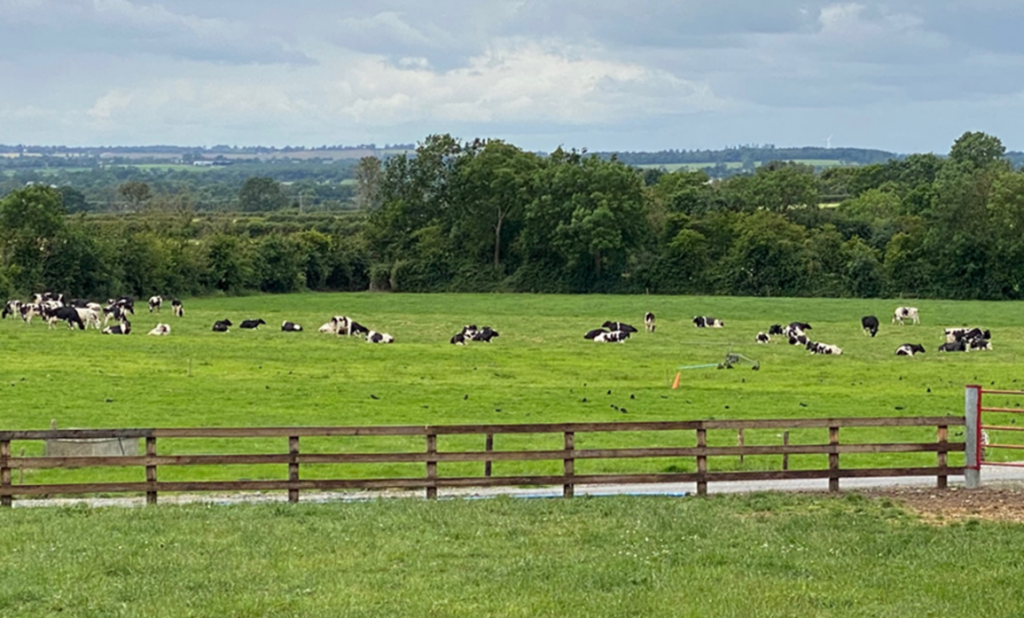
Dr. Derrell Peel, Oklahoma State University Extension Livestock Marketing Specialist, offers his economic analysis of the beef cattle industry as part of the weekly series known as the “Cow Calf Corner,” published electronically by Dr. Peel and Mark Johnson. Today, Dr. Peel talks about agriculture in Ireland.
The 2024 Ferguson College of Agriculture Study Abroad group crossed from Scotland to Ireland by ferry to finish up the two-week experience. The island of Ireland is just slightly larger than Scotland; both are about the size of South Carolina. Ireland consists of Northern Ireland, part of the U.K. in the six northern counties and the Republic of Ireland making up the remaining 83 percent of the island. Over 80 percent of land in Ireland is used for pasture and hay production, with under 10 percent used for arable crop production. However, some of the cropped area is extremely productive. Major crops are wheat, barley and oats. The photos below show winter wheat production in northeastern Ireland and the size of the developing wheat heads relative to my hand. Average wheat yield is about 175 bushels/acre.

Unlike the U.K., cattle outnumber sheep in Ireland with a total cattle inventory of 6.6 million head, compared to 4.0 million sheep. The are 1.5 million dairy cows in the country compared to 0.9 million beef cows. Dairy production is a huge industry with over 90 percent of dairy products exported. Most dairies are pasture-based on ryegrass forage (photo below). Dairy production is seasonal with many cows bred to calve in the spring so that lactation coincides with summer pasture production. Dairy production drops sharply in the winter months, with export production sharply curtailed and domestic fluid milk production maintained by a small set of specialized dairy farms.

Beef production is very important in Ireland, which has the third largest beef cow herd in Europe after France and Spain. About 90 percent of Irish beef is exported, primarily to the U.K. and Europe. The photo below shows a feedlot in the northeast part of the country. Cattle feeding is under roof due to the wet conditions. This particular feedlot feeds bulls part of the year for a specific market in Italy and feeds mostly heifers in the remainder of the year. The bulls are fed exclusively in the feedlot, arriving as 800-pound feeders and marketed about seven months later at roughly 1600 pounds. The ration consists primarily of grass silage and fodder beets with some grain. Steers and heifers fed for the domestic and other markets are often grazed longer and then finished in a short two to three month finishing period.

Feedlot cattle include a variety of British and Continental crossbred cattle, including the Belgian Blue cross bull in the photo below. Most of the cow-calf production occurs other regions of the country where crop production is not possible.

Ireland is blessed with a relative mild climate, moderated by the Atlantic Gulf Stream, which offsets the relatively northern latitude of the country. Forage production is possible nearly year-round but slows considerably in the winter months. Ireland has long been a major food producer for the U.K. and other European countries.

















